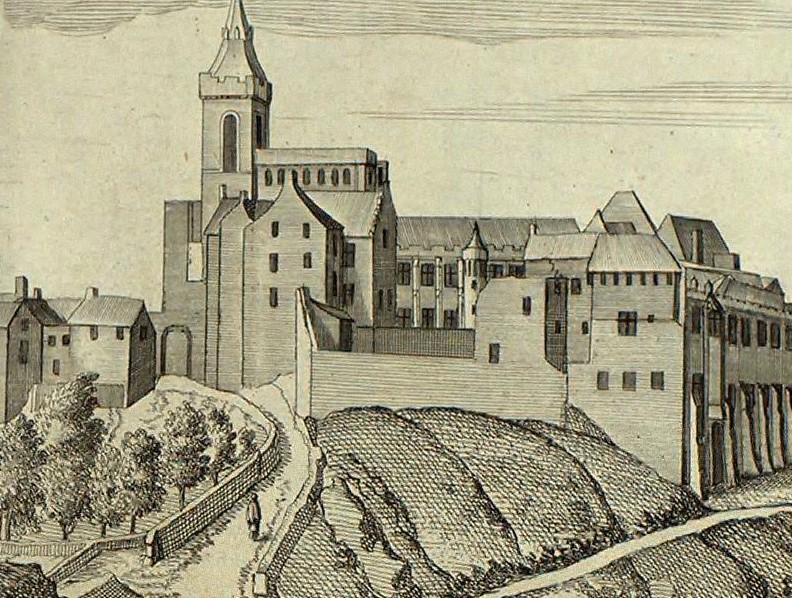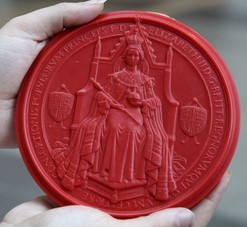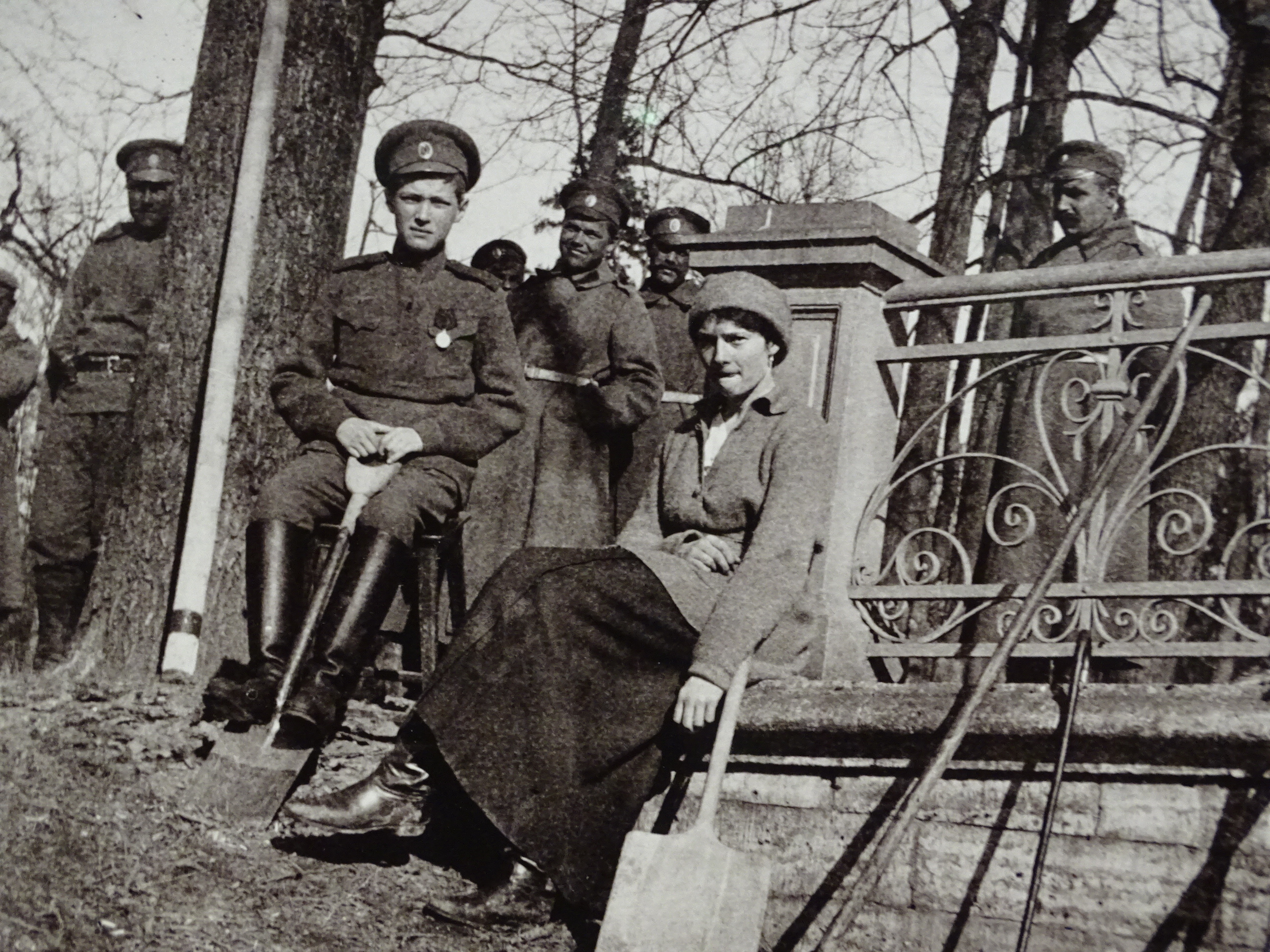|
John Maitland, 1st Lord Thirlestane
John Maitland, 1st Lord Maitland of Thirlestane (1537 – 3 October 1595), of Lethington, Knight (1581), was Lord Chancellor of Scotland. Life He was the second son of Sir Richard Maitland of Thirlestane, Berwickshire, and Lethington, Haddingtonshire, who settled the lands of Thirlestane upon him, and thereafter sent him abroad for his education. Through the influence of his brother, William Maitland, upon John Maitland's return, he received the offer of the position of Commendator of Kelso Abbey, which he shortly afterwards exchanged with Francis Stewart, later Earl of Bothwell, for the Priory of Coldingham. This transaction was ratified by Mary, Queen of Scots on 20 April 1567. Upon the death of his father, he was appointed Keeper of the Privy Seal of Scotland, on 20 April 1567. He also supported Regent Moray and sat in his parliaments in December 1567 and August 1568. On 2 June 1568, he was created a Senator of the College of Justice as an Ordinary Lord on the spiritu ... [...More Info...] [...Related Items...] OR: [Wikipedia] [Google] [Baidu] |
Linlithgow
Linlithgow (; gd, Gleann Iucha, sco, Lithgae) is a town in West Lothian, Scotland. It was historically West Lothian's county town, reflected in the county's historical name of Linlithgowshire. An ancient town, it lies in the Central Belt on an historic route between Edinburgh and Falkirk beside Linlithgow Loch. The town is situated approximately 20 miles (32 km) west of Edinburgh. During the medieval period, the town grew in prominence as a royal burgh and residence around Linlithgow Palace. In later centuries, Linlithgow became a centre of industry in leather making and other materials, before developing rapidly in the Victorian era with the opening of the Union Canal in the 1820s and the arrival of the railway in 1842. Linlithgow was the former county town of the county but the Council now resides in nearby Livingston. Today Linlithgow has less industry and the economy of the town centre is focused on hospitality, heritage and tourism services. Linlithgow's patron saint is ... [...More Info...] [...Related Items...] OR: [Wikipedia] [Google] [Baidu] |
James Stewart, Earl Of Arran
Captain James Stewart, Earl of Arran (died 1595) was created Earl of Arran by the young King James VI, who wrested the title from James Hamilton, 3rd Earl of Arran. He rose to become Lord Chancellor of Scotland and was eventually murdered in 1595. Career He was the second son of Andrew Stewart, 2nd Lord Ochiltree, by his wife Agnes, the daughter of John Cunningham, 5th of Capringtoun, Ayrshire. Stewart's sister, Margaret, was married to the reformer John Knox. In April 1573, James was sent as a "pledge" or hostage to England for the security of the English army and artillery sent to the "Lang Siege" of Edinburgh Castle, which was held by supporters of Mary Queen of Scots. Regent Morton gave him £55 for his expenses in England. He was Captain of the Royal Guard of James VI, served with the Dutch forces in the Netherlands against the Spanish, and returned to Scotland in 1579. James quickly became a favourite of the young king, and in 1580 was made Gentleman of the Bedcham ... [...More Info...] [...Related Items...] OR: [Wikipedia] [Google] [Baidu] |
Dirleton Castle
Dirleton Castle is a medieval fortress in the village of Dirleton, East Lothian, Scotland. It lies around west of North Berwick, and around east of Edinburgh. The oldest parts of the castle date to the 13th century, and it was abandoned by the end of the 17th century. Begun in around 1240 by John De Vaux, the castle was heavily damaged during the Wars of Scottish Independence, when it was twice taken by the English. In the 14th century, Dirleton was repaired by the Haliburton family, and it was acquired by the Ruthvens in 1505. The Ruthvens were involved in several plots against Mary, Queen of Scots, and King James VI, and eventually forfeited the castle in 1600. Dirleton ceased to be a residence, although Oliver Cromwell was forced to besiege the castle to flush out a band of "mosstroopers" ( marauders), during the Third English Civil War in 1650. The damaged castle was then acquired by John Nisbet, Lord Dirleton, who decided to build a new country house on the nearby Arch ... [...More Info...] [...Related Items...] OR: [Wikipedia] [Google] [Baidu] |
Secretary Of State (Kingdom Of Scotland)
The Secretary of Scotland or Lord Secretary was a senior post in the government of the Kingdom of Scotland. The office appeared in the 14th century (or earlier) when it was combined with that of Keeper of the Privy Seal. Called ''Clericus Regis'' (although some have applied that to the Lord Clerk Register), he was regarded as an Officer of State. The Secretary was constantly to attend the King's person, receive the petitions and memorials that were presented to him, and write the King's answers upon them. All Letters Patent passed through his hands, and were drawn up by him as with all the King's letters and dispatches, warrants, orders, &c. In the case of lengthy documents a short docket was also subscribed by the Secretary for the King's perusal, as a summary; and as all the writings signed by the King came through his hands, he was answerable for them if they contained anything derogatory to the laws or the dignity of The Crown. Scot of Scotstarvet, Sir John, Director of Chan ... [...More Info...] [...Related Items...] OR: [Wikipedia] [Google] [Baidu] |
Abbot Of Dunfermline
The Prior, then Abbot and then Commendator of Dunfermline was the head of the Benedictine monastic community of Dunfermline Abbey, Fife, Scotland. The abbey itself was founded in 1128 by King David I of Scotland, but was of earlier origin. King Máel Coluim mac Donnchada ("Malcolm III") had founded a church there with the help of Benedictines from Canterbury. Monks had been sent there in the reign of Étgar mac Maíl Choluim (Edgar, 1097–1107) and Anselm had sent a letter requesting that Étgar's brother and successor King Alaxandair mac Maíl Coluim (Alexander I, 1107–1124) protect these monks. By 1120, when Alaxandair sent a delegation to Canterbury to secure Eadmer for the bishopric of St Andrews, there is a Prior of the Dunfermline monks by the name of Peter leading the delegation. Control of the abbey was secularized in the 16th century and after the accession of James Stewart in 1500, the abbey was held by commendators. In the second half of the 16th century, the abbe ... [...More Info...] [...Related Items...] OR: [Wikipedia] [Google] [Baidu] |
Robert Pitcairn (commendator)
Robert Pitcairn (1520?–1584) was a Scottish administrator, diplomat and judge, secretary of state and commendator of Dunfermline. Early life Born about 1520, he was the son of David Pitcairn, of Forthar-Ramsay in the barony of Airdrie, Fife, and his wife Elizabeth Dury or Durie. On 22 January 1552 his father sold to him the lands of Forthar. He was a cousin of George Durie, Abbot of Dunfermline. He was educated for the church, and became Archdeacon of St Andrews Cathedral, and commendator of Dunfermline Abbey. In politics and diplomacy Pitcairn was summoned on 19 July 1565 to a meeting of the Privy Council as an extraordinary member, to consider a declaration of the Earl of Moray on a conspiracy against his life, at Perth. On 19 October of the same year he was appointed keeper of the havens of Limekilns and North Queensferry. After the surrender of Mary Queen of Scots at Carberry Hill on 15 June 1567, he was chosen a lord of the articles; and on 29 July he was present at ... [...More Info...] [...Related Items...] OR: [Wikipedia] [Google] [Baidu] |
Privy Council
A privy council is a body that advises the head of state of a state, typically, but not always, in the context of a monarchic government. The word "privy" means "private" or "secret"; thus, a privy council was originally a committee of the monarch's closest advisors to give confidential advice on state affairs. Privy councils Functioning privy councils Former or dormant privy councils See also * Privy Council of the Habsburg Netherlands * Council of State * Crown Council * Executive Council (Commonwealth countries) * Privy Council ministry * State Council State Council may refer to: Government * State Council of the Republic of Korea, the national cabinet of South Korea, headed by the President * State Council of the People's Republic of China, the national cabinet and chief administrative auth ... References {{DEFAULTSORT:Privy Council Advisory councils for heads of state Monarchy Royal and noble courts ... [...More Info...] [...Related Items...] OR: [Wikipedia] [Google] [Baidu] |
Great Seal Of Scotland
The Great Seal of Scotland ( gd, Seala Mòr na h-Alba) is a principal national symbol of Scotland that allows the monarch to authorise official documents without having to sign each document individually. Wax is melted in a metal mould or matrix and impressed into a wax figure that is attached by cord or ribbon to documents that the monarch wishes to make official. The earliest seal impression, in the Treasury of Durham Cathedral, is believed to be the Great Seal of Duncan II and dates to 1094. The current keeper of the Great Seal of Scotland is the First Minister of Scotland and it is considered as one of the highest honours of that office. History The chancellor had the custody of the King's Seal. Strictly, the continuation of the Great Seal of Scotland was guaranteed by the Treaty of Union which provided that "a Seal in Scotland after the Union be alwayes kept and made use of in all things relating to private Rights or Grants, which have usually passed the Great Seal of ... [...More Info...] [...Related Items...] OR: [Wikipedia] [Google] [Baidu] |
House Arrest
In justice and law, house arrest (also called home confinement, home detention, or, in modern times, electronic monitoring) is a measure by which a person is confined by the authorities to their residence. Travel is usually restricted, if allowed at all. House arrest is an alternative to being in a prison while awaiting trial or after sentencing. While house arrest can be applied to criminal cases when prison does not seem an appropriate measure, the term is often applied to the use of house confinement as a measure of repression by authoritarian governments against political dissidents. In these cases, the person under house arrest often does not have access to any means of communication with people outside of the home; if electronic communication is allowed, conversations may be monitored. History Judges have imposed sentences of home confinement, as an alternative to prison, as far back as the 17th century. Galileo was confined to his home following his infamous trial ... [...More Info...] [...Related Items...] OR: [Wikipedia] [Google] [Baidu] |
Cowthally Castle
Cowthally Castle, also known as Couthalley, is a ruined L-plan castle near Carnwath, Lanarkshire, Scotland. The remains are protected as a scheduled monument. The castle appears to have been constructed in the 12th century, and was re-built in 1375. The castle passed to Sir John Somerville, 4th Baron of Linton through marriage in 1317 to Lady Elizabeth Douglas. The castle was altered and extended in 1415 and again in 1524. The castle was besieged in 1557 and was partially destroyed and was rebuilt in 1586. The buildings at the Castle surviving in the 17th century were carefully described by the James Somerville in his family history; the ''Memorie of the Somervilles''. James Somerville claims that James IV came to Cowthally for a wedding "infare" in 1489 or the second year of his reign. Mary, Queen of Scots Mary, Queen of Scots (8 December 1542 – 8 February 1587), also known as Mary Stuart or Mary I of Scotland, was Queen of Scotland from 14 December 1542 until her forced ... [...More Info...] [...Related Items...] OR: [Wikipedia] [Google] [Baidu] |
East Lothian
East Lothian (; sco, East Lowden; gd, Lodainn an Ear) is one of the 32 council areas of Scotland, as well as a historic county, registration county and lieutenancy area. The county was called Haddingtonshire until 1921. In 1975, the historic county was incorporated for local government purposes into Lothian Region as East Lothian District, with some slight alterations of its boundaries. The Local Government etc. (Scotland) Act 1994 later created East Lothian as one of 32 modern council areas. East Lothian lies south of the Firth of Forth in the eastern central Lowlands of Scotland. It borders Edinburgh to the west, Midlothian to the south-west and the Scottish Borders to the south. Its administrative centre and former county town is Haddington while the largest town is Musselburgh. Haddingtonshire has ancient origins and is named in a charter of 1139 as ''Hadintunschira'' and in another of 1141 as ''Hadintunshire''. Three of the county's towns were designated as roy ... [...More Info...] [...Related Items...] OR: [Wikipedia] [Google] [Baidu] |






